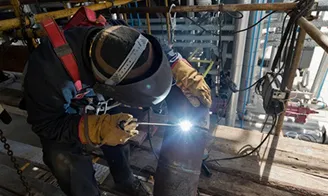welding stick electrode 3.2
Understanding the Welding Stick Electrode 3.2 A Comprehensive Guide
Welding is a pivotal process in numerous industries, ranging from construction and manufacturing to automotive and aerospace. At the heart of effective welding lies the welding electrode, and among the various types available, the 3.2 mm welding stick electrode has gained significant prominence. This article delves into the characteristics, applications, advantages, and best practices associated with the 3.2 mm welding stick electrode, providing a comprehensive understanding for both novice and experienced welders.
What is a Welding Stick Electrode?
A welding stick electrode, also known as a welding rod, is a consumable component used in manual arc welding processes. It serves as both an electrode and a filler material. When the electrode is struck against a workpiece, an electric arc is created, generating enough heat to melt the electrode and the base material, allowing them to fuse together. The welded joint solidifies as the molten metal cools, creating a strong bond.
Characteristics of the 3.2 mm Welding Stick Electrode
The designation 3.2 mm refers to the diameter of the welding rod, which is approximately 1/8 inch. This diameter offers a good balance between ease of handling, penetration, and deposition rate, making it suitable for various welding applications. The 3.2 mm welding stick electrode typically comes in different coatings, such as cellulose, rutile, and basic, each providing distinct characteristics concerning slag formation, arc stability, and penetration.
1. Coating Type The coating on the electrode affects the quality of the weld. Cellulose-based electrodes, for example, are known for their deep penetration and are ideal for welding in vertical positions. Rutile electrodes offer good arc stability and are easy to use, making them suitable for beginners.
2. Material Composition The composition of the electrode is critical to its performance. Electrodes can be made from various materials, including mild steel, stainless steel, and alloy steels, tailored to specific applications. The right electrode material ensures compatibility with the base metal being welded.
3. Current Range The 3.2 mm electrode generally operates on a range of direct current (DC) or alternating current (AC), allowing for flexibility in different welding environments. Its amperage settings typically range from 90 to 140 Amps, depending on the material and desired penetration.
Applications of the 3.2 mm Welding Stick Electrode
The versatility of the 3.2 mm welding stick electrode makes it a popular choice for multiple applications, including
- Fabrication and Repair Ideal for structural steel work, machinery repair, and general fabrication tasks. - Automotive Industry Commonly used for welding chassis, frames, and body panels, especially in DIY automotive repair projects. - Construction Widely employed in the construction of buildings, pipelines, and heavy equipment where robust and reliable welds are necessary.
welding stick electrode 3.2

Advantages of the 3.2 mm Welding Stick Electrode
The 3
.2 mm welding stick electrode offers several advantages that enhance its appeal1. Ease of Use Due to its manageable size, the 3.2 mm electrode is easier to maneuver for beginners and provides good control during the welding process.
2. Good Deposition Rate This electrode diameter provides a satisfactory deposition rate, allowing for efficient welding without excessive buildup of material.
3. Versatile Application Suitable for various positions and types of welding, including flat, horizontal, vertical, and overhead, it is adaptable to different welding challenges.
4. Cost-Effectiveness Generally, welding electrodes are an economical choice, providing good weld quality without significant investment.
Best Practices for Using the 3.2 mm Welding Stick Electrode
To maximize the performance of the 3.2 mm welding stick electrode, consider the following best practices
- Proper Preparation Clean the workpieces to remove rust, oil, and contaminants to ensure a strong weld bond. - Correct Settings Adjust the welding machine settings to match the electrode type, diameter, and base material. - Technique Use the appropriate angle and travel speed, maintaining a consistent motion to achieve uniform penetration and bead appearance. - Safety Precautions Always wear suitable safety gear, including gloves, a welding helmet, and protective clothing, to safeguard against sparks and UV radiation.
Conclusion
The 3.2 mm welding stick electrode is an invaluable tool in the arsenal of welders across various industries. Its ease of use, versatility, and efficiency make it suitable for a range of applications, from professional welding to DIY projects. By understanding its characteristics and adhering to best practices, welders can achieve high-quality results and ensure the longevity of their welded structures. Whether you are a beginner or a seasoned pro, mastering the use of the 3.2 mm welding stick electrode can significantly enhance your welding capabilities.
-
High-Strength Cast Iron Welding Electrode AWS ENi-ClNewsAug.03,2025
-
E6011 Welding Rod | All-Position AC/DC ElectrodesNewsAug.02,2025
-
J422 Welding Rod: Durable Electrodes for Strong WeldsNewsAug.01,2025
-
AWS E7024 Arc Welding Electrodes: High-Efficiency & Easy UseNewsJul.31,2025
-
AWS E7018 Welding Rod: Low Hydrogen ElectrodesNewsJul.31,2025
-
Arc Welding Electrodes AWS E7024 – High Deposition, Smooth FinishNewsJul.30,2025


